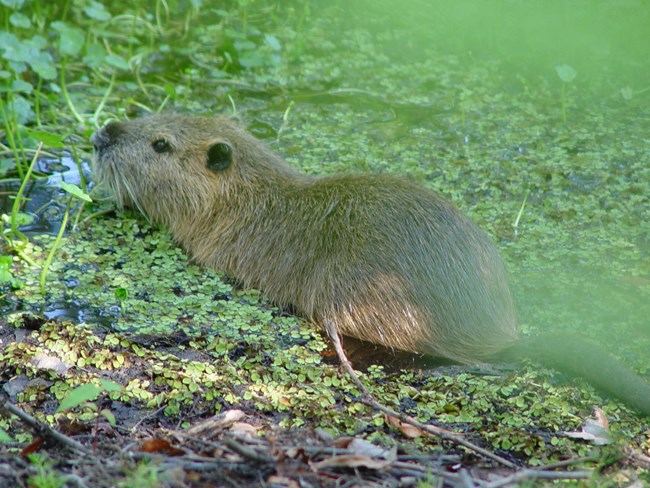|
The National Park Service’s wetland protection policies prevent most new activities in parks from harming these vital resources. However, there is substantial existing wetland degradation in parks with nearly 2.2 million acres of impaired wetland habitat currently identified throughout the National Park Service. Examples of activities that threaten or have already damaged wetlands in national parks and elsewhere:

NPS / R. Cammauf Roads, Dikes, and LeveesRoads, dikes, and levees can have damaging impacts on wetlands if they alter natural fresh water or tidal flow patterns or hinder movement of aquatic life. For example, Everglades National Park is working to restore water flow that has been diverted by canals and levees for many decades, and Cape Cod National Seashore is replacing a tide-restricting dike near the coast with a new bridge that would reconnect the Herring River Estuary to the ocean.Drainage Ditches or CanalsDrainage ditches or canals built for agriculture, mosquito control, or other purposes can alter wetland hydrology dramatically, even converting them to uplands. Assateague Island National Seashore, Jean Lafitte National Historical Park and Preserve, Indiana Dunes National Lakeshore, and Rocky Mountain National Park are among the many parks that have backfilled or plugged ditches or canals to restore wetlands.
NPS / Colleen Flanagan Pritz Depositing FillDepositing fill for development or other purposes destroys wetlands and can have offsite impacts by blocking flow or hindering movement of aquatic life. Channel Islands National Park in southern California and Cuyahoga Valley National Park in northern Ohio are two of the many parks that have removed fill to restore wetlands or “daylight” buried streams.PollutionPollution such as oil spills near coastal parks and airborne mercury or sulfur compounds at Acadia National Park and Gates of the Arctic National Park and Preserve can degrade wetlands and other aquatic habitats.
NPS photo Invasive PlantsInvasive plants like tamarisk at Canyon de Chelly National Monument or common reed (Phragmites australis) at Gateway National Recreation Area can squeeze out native plants, alter or eliminate habitat for some wildlife species, and even damage cultural landscapes.Unregulated Groundwater WithdrawlsUnregulated groundwater withdrawals for agriculture and water supply can lower water levels in some wetland systems during critical points in the growing season, degrading the habitats for plants, fish, or other aquatic life.
Livestock grazing, unless managed carefully, can remove plants that stabilize streambanks and protect soils from erosion. This can damage some wetland types by causing channel erosion and altering drainage, or it can degrade instream habitat with sediment.
|
Last updated: May 29, 2025



